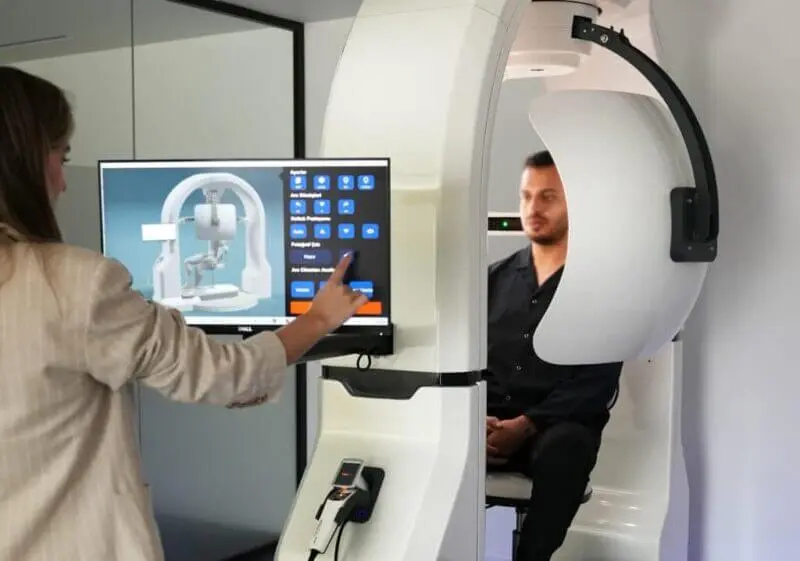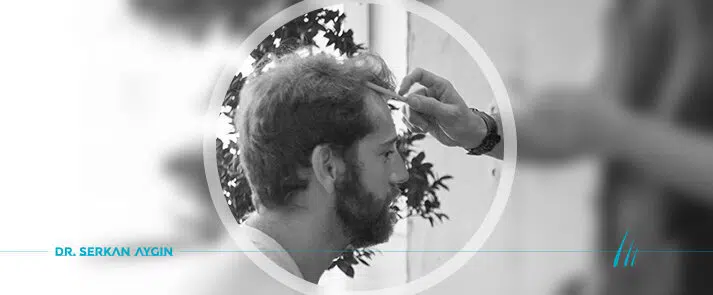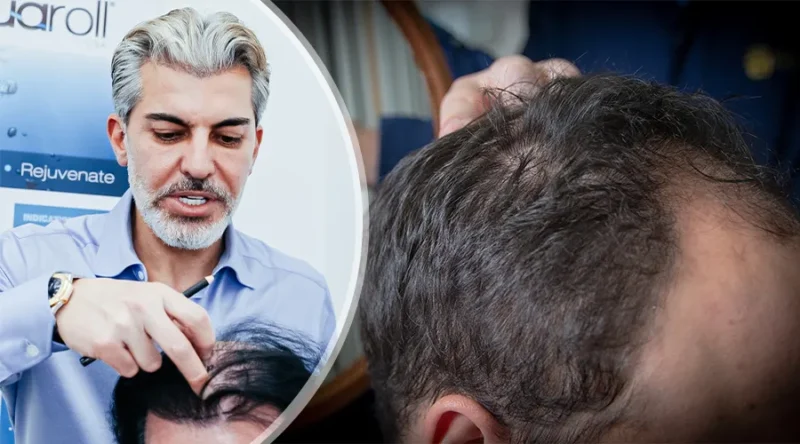For those brave (or crazy) enough to cross the pond, Turkey’s low prices are a no-brainer. But hold on. Choosing the right clinic for a hair transplant can help you restore your self-esteem without emptying your wallet, or ruining your head.
This article will compare hair transplant in Turkey vs US, focusing on price, techniques and quality standards. While both countries distinct strengths and weaknesses, Turkey remains the most popular option if you know what to ask and what to look for.
Hair Transplant Cost in Turkey vs. US
Many factors influence the price of a hair transplant. In fact, an overwhelming number of them. But let’s not widen the scope too much. The most important are these 4:
- Number of grafts: More grafts mean a longer operation, more doctors involved, and therefore a higher cost.
- Advanced Techniques: Innovative methods, such as a hybrid or a stem cell hair transplant, naturally come at a premium.
- Clinic reputation: the location and pedigree of the clinic can also ramp up prices due to higher demand and the success record.
- Surgeon experience: Hard work really does pay off, which is why experienced surgeons charge higher fees.
Here’s a quick comparison of average hair transplant costs in Turkey vs US:
Feature | Hair Transplant in Turkey (Approx. USD) | Hair Transplant in US (Approx. USD) |
Average Cost | $2,000 – $5,000 | $4,000 – $15,000+ |
Package Deals | Often all-inclusive | Typically procedure only |
In Turkey, the average cost of a hair transplant is $2,000 to $5,000. This often includes a package covering the procedure, accommodation, transfers, post-op care (such as red laser therapy or PRP) and even hair growth kits.
Hair transplant costs in the US are considerably higher. A similar procedure can be $6,000 to $15,000 or more. This higher price is influenced by higher labor costs, more expensive clinic overheads, and a different healthcare insurance structure.
Clinic Focus: Dr. Serkan Aygin (Turkey) vs. Top US Clinics
Simply put, the financial investment in the US can seem too high in comparison to A-list Turkish clinics. There is great private healthcare in the US, to be sure, but Turkey, and specifically the Dr. Serkan Aygin Clinic, present a compelling alternative (even at the same price).
The Dr. Serkan Aygin Clinic has a global reputation, attracting thousands of patients annually. Mr. Aygin was awarded ‘Best Hair Transplant Doctor in Europe‘ in Paris. If you add to this the fact that you can get operated at his clinic for an average $3,800, with Dr. Aygin supervising and designing your hairline himself, things start getting a little surreal.
If both your US and Turkish doctors show the same level of expertise, price simply becomes the most important factor. With many Mexican clinics following through, competition is getting ever tougher for US clinics.
Hair Transplant Techniques
The doctor, clinic and price are all very important. But the hair transplant technique is equally so. Depending on your degree of baldness, you might need heavy artillery, and a clinic capable of delivering results
Follicular Unit Extraction (FUE)
FUE, this widely popular technique, leaves no linear scar, and has a relatively quick recovery period. It’s an excellent option for a broad range of hair loss patterns. It’s one of the most standard, yes, but it does the trick if you’re only Norwood 2 or Norwood 3.
Direct Hair Implantation (DHI)
DHI allows for precise control over the depth, angle, and direction of each implanted hair graft. Many consider it the best technique for the most natural results. It is Dr. Serkan Aygin’s preferred technique and most recommended method, so much so that he has perfected it into the following technique.
Long DHI: Dr. Serkan Aygin’s Innovation
The Long DHI technique, was performed by Dr. Serkan Aygin on himself, in his own clinic (see video above). His method conceals the procedure, making it ideal discreet patients, or women and men who keep their hair long.
Stem Cell Hair Transplant
Stem cell hair transplants are an emerging field aiming to regenerate hair growth by utilizing the body’s own stem cells. While still largely experimental and not widely adopted, this research explores using stem cells to activate dormant follicles or stimulate new hair growth. It holds promise for less invasive and more natural solutions in the future.
Robotic Hair Transplant

Robotic hair transplant systems utilize advanced imaging and AI to assist in the extraction and sometimes implantation of hair follicles with extreme precision. The robot helps identify the healthiest grafts and performs extractions with consistency, reducing human fatigue and potential error. While still requiring human oversight, it enhances efficiency and accuracy.
Hair Transplants for Women
Hair transplants for women often require a different approach due to common diffuse thinning patterns rather than defined bald spots. Techniques like DHI and Long DHI are often preferred to minimize shaving and maintain existing hair length, focusing on increasing overall density and restoring hairlines naturally. The consultation process carefully considers unique female hair loss causes and aesthetic goals.
Quality Standards and Regulations: Turkey vs. US Healthcare
Understanding the regulatory landscapes in both Turkey and the US is paramount when considering a hair transplant, as these frameworks ensure patient safety and the quality of care. While both countries have established healthcare standards, their approaches to oversight and accreditation can differ.
Turkish Healthcare System: Standards and Oversight
Turkey has made significant investments in its healthcare infrastructure, particularly in the realm of medical tourism. The Turkish Ministry of Health is the primary regulatory body, overseeing all medical facilities and personnel. Clinics specializing in hair transplantation, like the Dr. Serkan Aygin Clinic, are required to adhere to strict licensing and accreditation processes. Many clinics also seek international accreditations, such as those from the Joint Commission International (JCI). While the sheer volume of clinics might make selection challenging, reputable ones operate under rigorous medical protocols.
US Healthcare Regulations: Ensuring Patient Safety
In the United States, the healthcare system is highly regulated, with various bodies ensuring quality and safety. The Food and Drug Administration (FDA) oversees medical devices and drugs, while state medical boards license and regulate physicians and clinics. Professional organizations like the American Academy of Dermatology (AAD) and the International Society of Hair Restoration Surgery (ISHRS) provide guidelines and standards for practices. This multi-layered oversight provides a high level of assurance for patients receiving hair transplants in the US.
Choosing a Reputable Clinic: What to Look For
Regardless of whether you choose Turkey or the US, selecting a reputable hair transplant clinic is crucial. Key indicators of a trustworthy clinic include:
- Accreditation and Licensing: Verify that the clinic and its medical professionals are properly licensed and accredited by relevant national and international bodies.
- Surgeon’s Experience and Qualifications: Research the surgeon’s background, years of experience, and specialization in hair restoration techniques (e.g., FUE, DHI).
- Patient Reviews and Testimonials: Look for authentic patient feedback and before-and-after photos to gauge success rates and patient satisfaction.
- Transparency in Pricing: A reputable clinic will provide a clear breakdown of costs with no hidden fees, often in a comprehensive package.
- Comprehensive Consultation: A thorough initial consultation should assess your hair loss, discuss realistic outcomes, and outline the treatment plan.
- Aftercare Support: Inquire about the post-operative care and follow-up support offered by the clinic, which is vital for optimal results and recovery.
Post-Procedure Support
Robust aftercare is crucial for successful outcomes. Both Turkish and US clinics provide post-operative support, though their approaches and accessibility differ based on whether you’re a local or international patient.
Comprehensive Care in Turkey
In Turkey, clinics like Dr. Serkan Aygin Clinic offer structured aftercare, often included in comprehensive packages. This typically starts immediately post-op with detailed instructions on scalp care, red light therapy, PRP, hair wash, and medication.
Aftercare in the US
US hair transplant clinics also prioritize aftercare, providing personalized support for optimal healing. They give post-operative instructions on managing swelling, scabbing, and resuming normal activities. Follow-up appointments are generally in-person, which is convenient for local patients, allowing direct monitoring by the surgical team. While not always offering all-inclusive packages, US clinics provide a clear pathway for ongoing support during the recovery phase.
The initial days after a hair transplant are vital. Patients are advised to avoid touching the transplanted area, sleep with their head elevated to minimize swelling, and gently wash their scalp as instructed. Refraining from strenuous exercise, alcohol, and smoking for a period is also crucial. Both destinations emphasize these steps, but ongoing support logistics are a key differentiator.
Making Your Decision: Informed Choices
Choosing between a hair transplant in Turkey or the US is a deeply personal decision, influenced by various factors. Both destinations offer the potential for excellent results, but they differ significantly in cost, logistical convenience, and the typical patient experience.
Key Factors for Your Hair Transplant Journey
Consider these points to guide your decision:
- Cost vs. Proximity: If affordability is your top priority, Turkey, with its competitive pricing and all-inclusive packages, is often more appealing. However, if you prefer the convenience of local follow-ups and avoiding international travel, the higher hair transplant costs in the US might be a worthwhile investment.
- Clinic Specialization: Turkey’s high volume of hair transplant procedures, particularly in clinics like Dr. Serkan Aygin Clinic, means surgeons and teams often have extensive experience with advanced techniques. US clinics offer strong regulatory oversight and personalized local care.
- Aftercare and Follow-up: Assess your comfort with remote follow-ups versus in-person appointments. While Turkish clinics provide comprehensive initial aftercare, ongoing physical check-ups are more straightforward in the US if you’re a resident.
- Research and Due Diligence: Regardless of location, thorough research is non-negotiable. Verify clinic accreditations, surgeon qualifications, and read patient testimonials. Look for transparent communication and realistic outcome expectations. Choosing a reputable clinic is key to a successful hair transplant.
Ultimately, the goal is a successful and satisfying hair restoration. Weigh the benefits and drawbacks of each option carefully, ensuring your chosen path aligns with your expectations for quality, safety, and overall experience.
Frequently Asked Questions
Is a hair transplant painful?
During the procedure, local anaesthesia is used, so you won’t feel pain. You might experience some mild discomfort or pressure. Post-surgery, pain is generally manageable with prescribed painkillers and usually subsides within a few days.
How long does recovery take?
Initial healing, where swelling and scabbing subside, typically takes 7-10 days. The transplanted hairs will often shed within 2-4 weeks, which is a normal part of the process. New hair growth usually begins around 3-4 months, with full results visible between 12-18 months.
Are the results permanent?
Yes, the transplanted hair follicles are typically taken from areas of your scalp that are genetically resistant to balding. Once transplanted, these follicles retain their characteristics and continue to grow naturally and permanently.
What are the risks?
Like any surgical procedure, hair transplants carry some risks, though they are generally minor. These can include swelling, bruising, temporary numbness, itching, or minor infection. Choosing an experienced surgeon and a reputable clinic significantly minimizes these risks. Rare complications might include poor graft survival or an unnatural appearance if not performed expertly.





